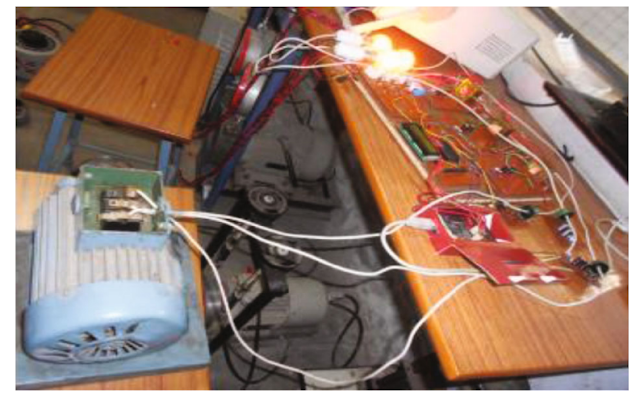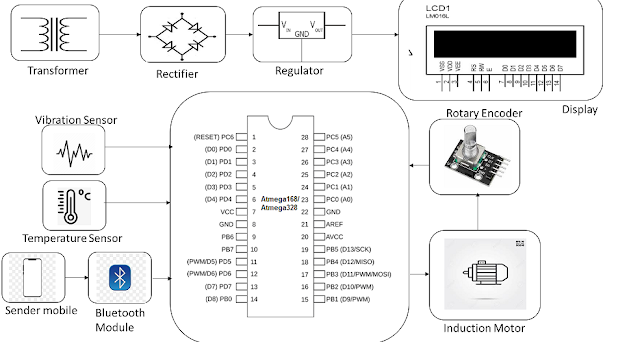Testing & Maintenance Procedure For Substations And Switchgear.
Overview:
The Following Procedures Can Be Used To Safely And Effectively Maintain Switchgear And Electrical Equipment.
1. Being Aware Of The Work
2. Making Use Of The Work Permit
3. Getting Ready For The Task
4. Making Use Of The Shutdown
5. Maintenance Tasks
6. Finishing The Work
7. Returning The Power Status To Normal
8. Giving The Permit Back
9. Note The Outcomes.
Comprehending The Work:
The Supervisory Personnel Needs To Be Well Aware Of The Task That Needs To Be Completed In A Methodical And Detailed Manner. Their Subordinates Ought To Have An Equitable Understanding Of This Role.
Maintenance Of 11 K.V./3.3 K.V. Transformers For Substations RM01 To RM13:
- Verify The Tag Number On The VCB Panel After Receiving The Work Permit.
- Request With A Copy Of The Work Permit That M-20 Personnel Trip And Earth The Feeder Connected To The 11kv.
- An Earthing Truck Will Be Used In Lieu Of The Drawn-out 11kv Breaker By M-20 Personnel.
- Verify That An M20 Employee Has Turned This Earthing Truck "On," Then Secure It With A Lock Of Your Own Choosing And Keep The Key On You.
- Make Sure There Is No Humming Noise Coming From The Transformer Undergoing Maintenance When You Return To Your Substation.
- Make Sure The Ycb Panel Is In The Off Position By Checking It Again. This Attests To The Inter-trip With M-20 Feeder's Operational State.
Rack The YCB:
To Access The Test/rack-out Position Of The Breaker, Open The Cubicles, Grasp The Handle And Lift The Latch, Then Exert Enough Force To Bring The Breaker Out. The Latch Will Return To Its Original Position When It Is In The Proper Position.
Disconnect The Control Cable Plugs And Turn Off The Control Supply. Unscrew The Nuts To Remove The Stopper Strip In Front Of The Vcb. By Turning Two Knobs To Release The Handle Hooks, The Draw-out Breaker Is Fully Removed From The Panel.
Earth The Incomer's Cable Side.
Place The Earthing Handle In Its Designated Location, Engage The Latch, And Proceed.
Knowing The Location Of The Equipment, Its Purpose, And Its General Specifications—such As Voltage Level, Capacity, Duty— All Contribute To Identifying The Work.
Before Beginning To Shut Down The Equipment, A Backup Plan Should Be Thought Through And Supplied To Ensure Power Supply Continuity.
Obtaining A Work Permit:
A Work Permit Needs To Be Obtained.
1.1.1. By A Person Who Is Qualified To Accept It.
1.1.2. From An Individual Qualified To Provide It.
1.1.3. For A Legitimately Appointed And Authorized Task.
1.1.4. Following The Operation Staff's Explanation Of The Specific Actions Involved In The Task At Hand.
1.1.5. With The KNPC's Signature And Appropriate Notification.
Engineer Should The Task Need Transferring The Operation Of Any UPS System.
- Before Beginning Any Task That May Potentially Cause An Announcement Or Alarm To Be Sent To A Department Other Than Operations—for Example, The Fire Station—that Department Should Be Notified About It.
- The Work Permit Needs To Be Clearly Visible To The Inspecting Authorities Or Easily Accessible At The Location Of The Job.
Putting The Work In Order:
Half Of The Completed And Signed Caution Notice Should Be Placed At The Equipment And The Other Half Should Be Conspicuously Displayed At The Equipment Control Panel Where The Equipment Is Being Used.
Nominations And Notifications For The Maintenance Work Should Be Made To The Staff.
Before Beginning Any Work, At Least Two Senior Supervisor Staff Members Must Identify The Equipment And Verify That It Is In Good Working Order.
Use Warning Tape To Surround And Cordon Off The Appropriate Equipment.
The Individual Permitted To Work Must Have A Thorough Understanding Of The Relationships Between The Equipment That Is Being Maintained And That Which Is Connected To It Through Power Flow Or Process Logic. Seniors Should Be Consulted If There Is Any Uncertainty Until A Suitable Resolution Is Obtained.
Utilizing Shutdown:
Before Beginning Any Work, Ascertain The Current State Of The Power Flow, The Bus Tie's Status, And The Overall Load In The Event That The Transformers Are Operating Simultaneously.
Notify The Operations Personnel (And The Fire Station, If Necessary) Of Your Procedures, As Well As Any Anticipated Alarms And Changes In Power Flow, Right Before You Begin To Shut Down.
After Verifying The Tag Number, Turn Off The Circuit Breaker; This Should Only Be Done By The Authorized Worker With A Valid Work Permit And In The Area Engineer's Presence.
Get The Circuit Breaker Rung Out.
Using The Appropriate Tools And Following The Manufacturer's Instructions, Earth The Circuit.
Upkeep Tasks
Assign The Task To Specific Employees Who Should Only Be Permitted On The Site.
As Directed By The Manufacturer And The Cmms, Do The Necessary Maintenance On The Equipment.
Finalizing Maintenance Tasks.
If There Is Any Cordon Tape Surrounding The Equipment, Remove It.
Clear The Area.
Inform Your Employees That The Work Is Over.
Bringing The System Back To Normal.
After Verifying The Tag Number, Remove The Circuit Earthing In Accordance With The Authorized Process.
Rack-in The Circuit Breaker In Accordance With The Authorized Protocol.
Obtaining A Work Permit Again.
Notify The Operation Crew That The Task Has Been Finished.
Apply Enough Force To Move The Earthing Handle Downward. When The Earthing Switch Is Activated, The Incoming Cable Becomes Earthed.
Observe And Check Correctness Of Indications I.e. VCB Off Condition Earth Switch On Condition.
Secure The Cubbyhole Opening.
Transformer Upkeep.
Assign This Task To A Specific Employee Who Will Only Be Permitted Access To The Transformer Yard.
Starting From The Top And Working Your Way Down, Thoroughly Clean The Transformer's Exterior, Looking For Any Damage Or Leaks Of Oil, Etc.
Lift The Covers Of The Primary And Secondary Side Cable Boxes. Clean Them All And Open The Cover Of The Neutral C.T. Box As Well.
Examine The Connections For Any Looseness Or Spark-pitting, And Tighten Them If Necessary.
Examine, Tidy, And Reinstall All Earthing Connections.
Examine The Silica Gel's Condition And Replace It With The Appropriate Amount Of Oil If Needed.
To Enable Manual Fan Operation, Clean And Inspect The Transformer's Cooling System Control Panel.
As Follows, Megger The Transformer:
1. Turning The Earthing Truck "Off" At M-20 S/S.
2. Turn The 3.3kv Side Earthing Switch "Off."
3. Megger 11 Kv To The Transformer Body, Then Record The Findings.
4. Determine The Main And Secondary Insulation Resistance Values.
5. To Indicate That You Have Finished The Assignment, Sign Column No. 9. Verify That This Signature Appears On Every Copy.
6. Verify That The Operator's Signature Appears On All Three Copies As Proof That The Task Has Been Finished.
7. Remove Your Copy Of The Employment Permit.
Documenting The Outcomes:
1. Enter The Completed Task In The Substation Logbook.
2. Record The Maintenance Work Performed In The History Card File And Sign It.
Use A 5kV Megger For Primary To Earth And Primary To Secondary.
Use A 2.5 KV Megger For Secondary To Earth.
Make Sure There Are No Tools Or Materials Within The Terminal Boxes By Closing Them.
Take Samples Of Transformer Oil To Test For Acidity And Dielectric Strength.
Place The Potential Transformer's Lifting Cart Close To The P.T. Cubicle. Pull Outward After Lifting The Latching Pin On The P.T. Handle On Both Sides. Secure It In The Cart. Take Off The Control Plug Pins. Take It Out And Set It On The Ground.
Tighten The Connection, Clean The P.T. And L.A., And Look For Any Anomalies. Calculate The Values Of Insulating Resistance (2.5 KV Megger).
Rack: Using The Same Process In P.T. And L.A.
Inspect The VCB For Manual Operation, Lubricate All Moving Parts, And Make Sure The Contacts Are Clear. Assess The Poles' Insulation And Contact Resistance.
Set The VCB To The Test Position. Put The Stopper Flap Back Where It Belonged. Turn On The Control Supply And Connect The Control Plug Pins To The VCB.
Conduct Functional Testing.
A) Inter-trip
B) The Trip Alarm For Buchholzs Relay
C) Adjusting Oil Level And Winding Temperature Alarms.
Terminating The Maintenance Project.
1. Take Remove The Tape That Is Cordoning Off The Transformer.
2. Verify That The Hazard Warning Signs In The Transformer Yard Are Posted In The Appropriate Locations.
3. Make Sure The Transformer Yard Is Tidy.
4. Request That Everyone Leave The Transformer Yard And Close It From The Outside.
5. With KNPC Clearance, Calibrate The Measuring And Protective Tools, Then Document The Findings.
6. Inform Everyone Verbally That The Work Is Finished.
Bringing The System Back To Normal
1. Put The Earthing Truck's Key Back And Unlock The M-20 S/S Lock.
2. Ask The M-20 S/S Employees To Take Out The Earthing Truck And Replace The 11 KV VCB In The Service Position.
3. Ask M–20 Employees To Turn The 11 KV Feeders That Are In Question On The VCB.
4. Verify That You Can Hear This Transformer Humming.
5. Verifications From The Panel That The Right Voltage Values Are Available.
6. Turn Off The Transformer's 3.3kv Breaker.
7. Verify The Load That This Transformer Shares With The Other Transformer And The Prior Values.
Obtaining A New Work Permit:
Notify The Operation Crew That The Task Has Been Finished.
At Column No. 9, Indicate That You Have Finished The Assignment. Verify That This Signature Is On All Three Copies.
Verify Sure The Operator's Signature Appears On All Three Copies As Proof That The Task Has Been Finished.
Remove Your Copy Of The Work Permit.
Documenting The Outcomes
Make Notes About The Maintenance Work Completed In The History Card File And Sign It.
Obtain And Review The Results Of The Oil Sample. Add This Outcome To The History File As Well.
Attention:-
Kindly Note That To View More Jobs Post , You Can Also Click On The Arrow "Right/Older Post" Or "Left/Pervious Post " Next To "HOME" Icons.








